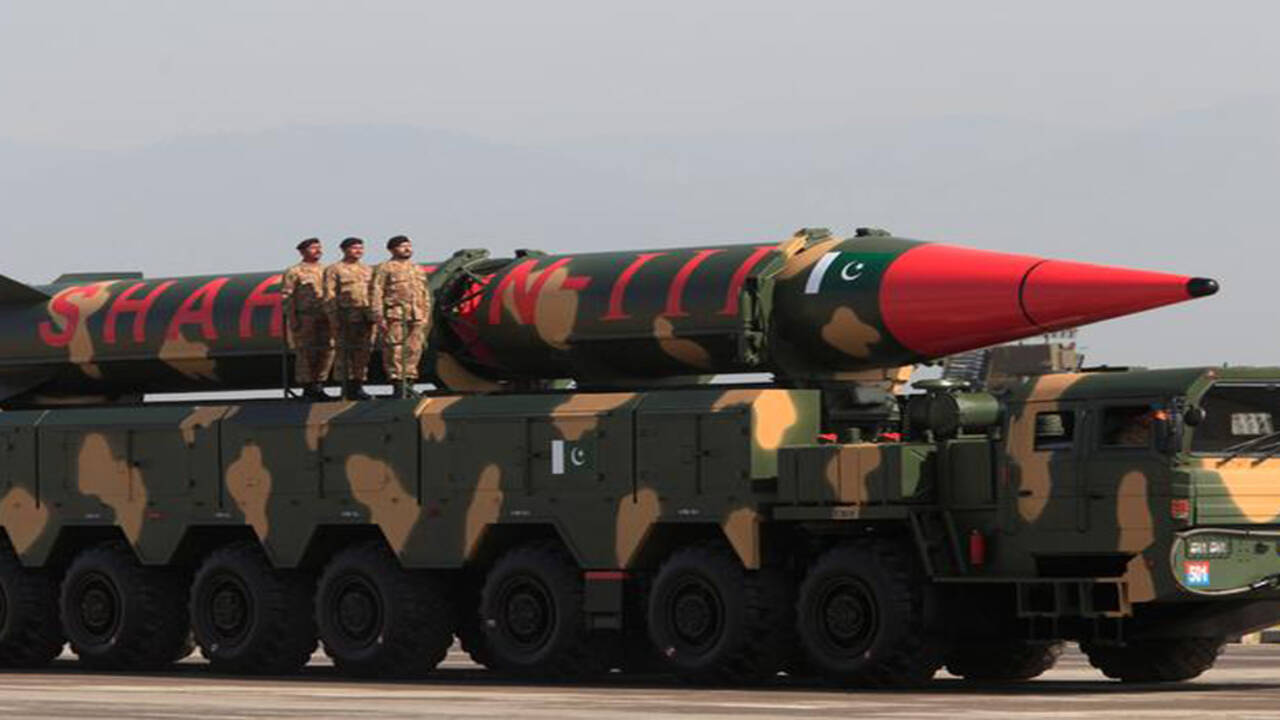SOURCE: RAUNAK KUNDE / NEWS BEAT / IDRW.ORG

The Indian Air Force (IAF) and the Defence Research and Development Organisation (DRDO) are intensifying efforts to expedite the development of an Air-Launched Sub-Sonic Cruise Missile, a derivative of the Indigenous Technology Cruise Missile (ITCM). This new missile, designed to enhance the IAF’s long-range precision strike capabilities, will feature tailored modifications to meet the demands of air-launched operations, offering a cost-effective alternative to the supersonic BrahMos-NG. According to sources cited by idrw.org, the missile is poised to become a key addition to the IAF’s arsenal, capable of striking targets deep inside enemy territory with a range of 500-600 km.
The Air-Launched Sub-Sonic Cruise Missile, built on the ITCM platform, will incorporate several modifications to optimize its performance when deployed from fighter aircraft. Unlike its ground-launched ITCM counterpart, the air-launched variant will eliminate the booster stage, as the missile will be jettisoned directly from an aircraft, leveraging the platform’s altitude and velocity for initial propulsion. The airframe will undergo minor changes to ensure seamless integration with IAF fighter jets, including the Su-30 MKI, MiG-29, Rafale, and Tejas, as well as future platforms like the Advanced Medium Combat Aircraft (AMCA).
Continue readingSOURCE: RAUNAK KUNDE / NEWS BEAT / IDRW.ORG

In a significant stride towards self-reliance in defense technology, the Transmission Technology Centre (TTC) division of the Combat Vehicles Research and Development Establishment (CVRDE), under the Defence Research and Development Organisation (DRDO), has successfully designed and developed an indigenous 1500HP Automatic Transmission, christened DATRAN-1500. This cutting-edge system, developed in collaboration with Larsen & Toubro (L&T) as the Development-cum-Production Partner (DcPP), is set to power India’s next-generation Armoured Fighting Vehicles (AFVs), bolstering the nation’s defense capabilities.
The DATRAN-1500 is a testament to India’s growing expertise in advanced defense technologies. This state-of-the-art automatic transmission system is engineered to meet the rigorous demands of modern armored platforms, offering enhanced mobility, reliability, and operational efficiency. With a power capacity of 1500 horsepower, the DATRAN-1500 is designed to provide superior performance for heavy-duty AFVs, ensuring seamless power delivery and operational agility in diverse combat scenarios.
Continue readingSOURCE: RAUNAK KUNDE / NEWS BEAT / IDRW.ORG

Sudhir Mishra, former CEO of BrahMos Aerospace, has revealed that the BrahMos-NG (Next Generation) missile, currently under development, holds the potential to be adapted as an air-to-air missile system. However, he clarified that this variant is not intended for engaging fighter jets at long range. Instead, it is designed to neutralize larger, high-value aerial targets such as Airborne Warning and Control Systems (AWACS), mid-air refuelers, and transport aircraft.
The BrahMos-NG, a lighter and more compact version of the original BrahMos missile, weighs approximately 1.3 tons and is primarily being developed for the Indian Air Force (IAF) as an air-to-ground or air-to-sea weapon.
Continue readingSOURCE: AFI

In a significant move toward refining the aerodynamics and stealth profile of India’s fifth-generation fighter, the Advanced Medium Combat Aircraft (AMCA), the Aeronautical Development Agency (ADA) has issued a tender for the fabrication of specialized wind tunnel models and structural test boxes. The testing campaign, which will run in parallel with the ongoing Critical Design Review (CDR) and prototype manufacturing efforts, is seen as part of the natural evolution of the AMCA’s development and not a delay.
Sources close to the AMCA program confirm that the wind tunnel testing is aimed at validating the aerodynamic refinements, control surface efficiency, and stealth shaping characteristics of the aircraft in various flight regimes. The models will undergo extensive testing in subsonic, transonic, and supersonic conditions to support final configuration validation before the first flight.
Continue readingSOURCE: AFI

In a rare incident involving a fifth-generation stealth fighter jet on Indian soil, the Indian Air Force (IAF) confirmed that a Royal Navy F-35B Lightning II fighter jet made an emergency landing at Thiruvananthapuram International Airport on the night of 14 June 2025. The aircraft was operating from the UK’s flagship aircraft carrier, HMS Prince of Wales, which is currently deployed in the Indian Ocean Region.
According to the IAF, the F-35B was undertaking routine flying operations outside India’s Air Defence Identification Zone (ADIZ) with Thiruvananthapuram designated as its emergency recovery airfield. Upon declaring an emergency and requesting diversion, the F-35B was detected and identified by the IAF’s Integrated Air Command and Control System (IACCS), which subsequently cleared it for recovery.
Continue readingSOURCE: AFI

In a thought-provoking analysis shared on X, defence enthusiast VatsRohit (@KesariDhwaj) has sparked a debate by highlighting the distinct challenges India faces in its air defence (AD) strategy compared to Israel’s defence posture against Iran. The post underscores the unique geopolitical and technological complexities of India’s scenario, particularly in countering potential threats from Pakistan and China, and why direct comparisons with Israel’s missile defence framework are misleading.
VatsRohit argues that equating India-Pakistan and Israel-Iran dynamics in terms of missile and drone attacks is flawed. Unlike Israel, which faces a concentrated threat from Iran’s ballistic missiles and drones over a compact geographical area, India has not yet encountered a scenario where Pakistan deploys ballistic missiles with conventional warheads against military or civilian targets. “Sorry to break your bubble, but there is no comparison between India-Pakistan and Israel-Iran in terms of missile/drone attacks and AD systems to counter them,” the post states.
Continue readingSOURCE: AFI

A provocative statement attributed to Mohsen Rezaei, a member of Iran’s Expediency Discernment Council, stirred international attention. Rezaei claimed that Pakistan had assured Iran of a retaliatory nuclear strike against Israel in the event of an Israeli nuclear attack on Tehran. The statement, widely shared across social media platforms like X, has sparked a mix of reactions, ranging from alarm to skepticism, with some Indian commentators dismissing it as “Lahori Churan”—a colloquial term implying an overhyped or impractical solution.
According to posts on X, Mohsen Rezaei, a prominent figure in Iran’s political and security establishment, stated: “Pakistan told Iran that ‘if Israel drops a nuclear bomb in Tehran, we will drop a nuclear bomb on them.’” This alleged assurance from Pakistan, a nuclear-armed state with a complex history of alliances, comes at a time of heightened tensions in the Middle East, particularly between Israel and Iran. Rezaei’s statement, if accurate, suggests a significant escalation in Pakistan’s strategic posture, aligning it closely with Iran in a potential nuclear confrontation.
Continue readingSOURCE: PTI

Prime Minister Narendra Modi and the President of Cyprus, Nikos Christodoulides, attended a business roundtable event and interacted with leading CEOs to boost strategic partnership between the two countries in several sectors and also spoke about India’s economic growth trajectory in the last one decade.
Taking to his official X account on Sunday (local time) here, PM Modi in a post said: “Boosting business linkages! President Nikos Christodoulides and I interacted with leading CEOs in order to add vigour to commercial linkages between India and Cyprus. Sectors like innovation, energy, technology and more offer immense potential. I also talked about India’s reform trajectory in the last decade.”
Continue readingSOURCE: PTI

Indian billionaire Gautam Adani-led group’s Haifa port in Israel was unharmed by the Iranian ballistic missile attack, with cargo operations progressing unhampered, sources said. Late on Saturday night, Iran targeted Israel’s Haifa port and a nearby oil refinery in response to Tel Avi’s attack on Iranian nuclear and other targets earlier this week.
Sharpnels fell in the chemical terminal at the port and some other projectiles fell at the oil refinery, two sources aware of the matter said. They claimed there were no injuries.
Continue readingSOURCE: PTI

Rajveer Singh Chauhan, the pilot of the helicopter that crashed in Uttarakhand early Sunday killing all seven on board, had served in the Indian Army for over 15 years and had vast experience of flying missions over different terrains.
Rajveer Singh Chauhan (37), a resident of Jaipur’s Shastri Nagar, was working as a pilot with Aryan Aviation Private Ltd since October 2024.
Continue readingSOURCE: IANS

The Nepal Electricity Authority (NEA) on Sunday resumed exporting 40 megawatts (MW) of electricity to Bangladesh through India’s power transmission system. The resumption follows a tripartite agreement signed in 2023 between the NEA, the Bangladesh Power Development Board (BPDB), and India’s NTPC Vidyut Vyapar Nigam Limited (NVVN).
Under the agreement, the NEA will export electricity to Bangladesh for five months – from June 15 to November 15 – during Nepal’s peak production period in the rainy season. NEA Deputy Manager Subarna Sapkota of the Electricity System Control Department stated that a total of 146.88 million units of electricity will be exported over this period, generating an estimated Rs 129 crore in revenue. The export rate has been fixed at 6.40 US cents per unit. Bangladesh has agreed to import electricity from Nepal for the next five years.
Continue readingSOURCE: PTI

Space agency Indian Space Research Organisation successfully conducted a rocket launching test in Kushinagar, marking the first time a payload was launched via a rocket from the soil of Uttar Pradesh, officials said.
The test conducted on Saturday in collaboration with Thrust Tech India Limited saw the rocket ascend 1.1 km at 5:14:33 PM, a complete success. Indian Space Research Organisation scientist Abhishek Singh said, “The rocket was launched at 5:14 PM and 33 seconds, which went up to a height of 1.1 km. After this, a small satellite (payload) came out. As soon as it fell down to 5 metres, its parachute activated and the satellite landed within 400 metres on the ground.”
Continue readingSOURCE: PTI

With the Israel-Iran conflict intensifying, the government must urgently review energy risk scenarios, diversify crude sourcing, and ensure strategic reserves are sufficient, think tank GTRI said on Sunday. Due to the war, India is increasingly at risk of collateral economic fallout, with energy security, trade routes, and key commercial interests facing growing uncertainty, the Global Trade Research Initiative (GTRI) said.
“The escalating hostilities and rising regional tensions are posing direct threats to India’s strategic and economic links with West Asia,” GTRI Founder Ajay Srivastava said, adding India has significant trade exposure to both warring nations.
Continue readingSOURCE: IANS

With the escalating tensions in the Middle East following the recent conflict between Iran and Israel, the Ministry of External Affairs in a statement on Monday said that India is closely monitoring the security situation to ensure the safety and welfare of its nationals in both countries.
In a statement released on social media platform X, the MEA Spokesperson Randhir Jaiswal confirmed that the Indian Embassy in Tehran is “continuously monitoring the security situation and engaging Indian students in Iran to ensure their safety.”
Continue readingSOURCE: PTI

The Representative office of India in Ramallah on Saturday advised Indian nationals in Palestine to remain vigilant and avoid unnecessary movement in the wake of the tension in the region. Providing an emergency number, the office asked those seeking assistance to contact at +970592916418 or cons.ramallah@mea.gov.in.
“In view of the current situation in the region, all Indian nationals in Palestine are requested to remain vigilant and observe locally advised safety and emergency procedures. Please exercise caution and avoid unnecessary movement,” India in Palestine posted on X.
Continue reading